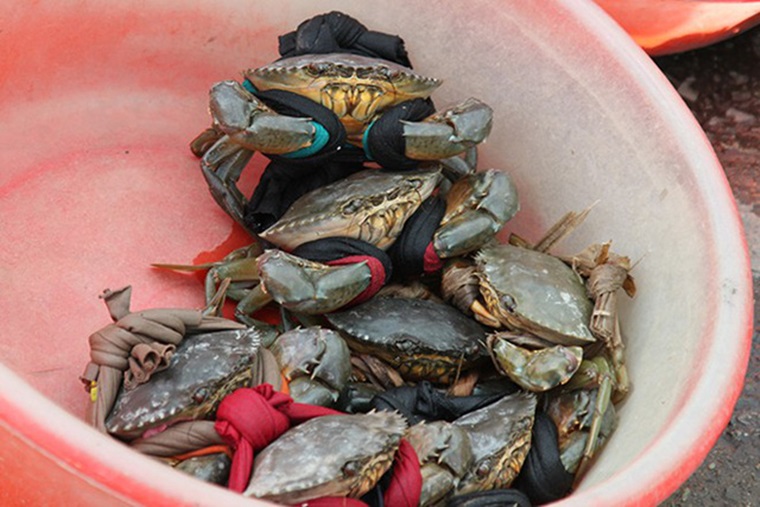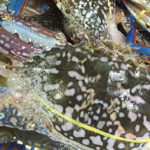1 How to Select the Best Sea Crabs: A Guide to Finding Delicious, Fresh Catch
When it comes to choosing sea crabs, there are a few key indicators of freshness and quality to look out for. Firstly, always opt for crabs with a dark and opaque outer shell. A simple way to test their freshness is by pressing your thumb on the crab’s apron area; it should feel firm and sturdy. Crabs with larger aprons are also likely to yield more meat, so keep an eye out for those.
One of the telltale signs of a fresh crab is its apron. Fresh crabs have aprons that stick closely to their bodies, so avoid those with loose aprons. Additionally, look for crabs with sturdy legs and claws that move continuously and flexibly. The spines on the shell and claws should be intact and sharp, as this is another indicator of a healthy crab.
It’s important to steer clear of crabs with green shells or aprons. If the apron feels soft when pressed, it usually suggests the crab has a higher water content. While this might make it heavier, it also means less meat and a potential compromise on taste.
2 Storing Sea Crabs to Maintain Freshness and Flavor

To truly savor the freshest and most nutritious crab meat, it’s best to cook and consume the crabs soon after purchasing them. This ensures the meat retains its firmness and flavor. However, if you find yourself with a bulk purchase or unable to cook them immediately, there are a few storage methods you can employ.
One option is to keep the crabs in the crisper drawer of your refrigerator. Remove any bindings to give them space to move freely, and offer them some food to extend their lifespan. Stored this way, crabs can stay alive and fresh for up to 3 to 5 days.
Alternatively, you can try the basin method. Keep the crabs in a basin and change the water twice a day. Place the basin in a cool, well-ventilated area, avoiding mosquito-prone spots. Mosquito bites on the crabs’ eyes can be fatal. Remember not to submerge the crabs in water, as this will impact the meat’s firmness.
By following these tips, you’ll be able to select and store sea crabs effectively, ensuring they meet your standards of freshness and flavor. Don’t hesitate to reach out with any further queries about choosing crabs—we’re here to help.
How to Tell the Difference Between Crabs and Crayfish, and Which is the Better Choice?
“Crab and crayfish are two seafood delights, often gracing our dinner tables and offering a tasty treat. With their similar appearance and flavor, it can be tricky to tell them apart. But fear not, as we reveal the secrets to distinguishing these two crustaceans. It’s time to become a seafood connoisseur and never mix up your crabs and crayfish again!”
Why Do Chef’s Pre-Prepared Crab Paste Usually Include a Teaspoon of Salt?
Introducing the secret ingredient to elevate your crab-pounding experience – a pinch of salt! Witness the magic unfold as a simple grain of salt transforms the ordinary into a culinary delight. But why is salt added while pounding crabs? Uncover the science behind this age-old practice and embrace the perfect blend of tradition and taste.






































